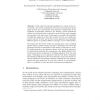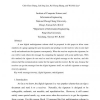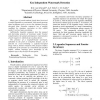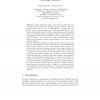115
click to vote
EUROCRYPT
2007
Springer
15 years 4 months ago
2007
Springer
Abstract. With computer networks spreading into a variety of new environments, the need to authenticate and secure communication grows. Many of these new environments have particul...
CISC
2007
Springer
15 years 4 months ago
2007
Springer
Abstract. In this paper, we propose a signcryption scheme which provides all the following properties at the same time. (1) forward security: the private key of a sender does not h...
107
click to vote
ACNS
2009
Springer
15 years 4 months ago
2009
Springer
Releasing a classical digital signature faces to privacy issues. Indeed, there are cases where the prover needs to authenticate some data without making it possible for any malicio...
101
click to vote
EUROMICRO
1996
IEEE
15 years 5 months ago
1996
IEEE
Signature based error detection techniques (e.g. the application of watchdog processors) can be easily extended to support software debugging. The run-time sequence of signatures ...
104
click to vote
PKC
1998
Springer
15 years 5 months ago
1998
Springer
A new digital multisignature scheme shall be proposed in this paper to allow some members of a group signing the same document and sending it to the receiver, who in turn shall ve...
112
Voted
ICMCS
1999
IEEE
15 years 5 months ago
1999
IEEE
Many types of pseudo-random signals have been used to embed signatures as watermarks, with spread spectrum signal techniques used to recover the signature from the encrypted data....
88
Voted
IMA
2001
Springer
15 years 5 months ago
2001
Springer
Abstract. This paper specializes the signature forgery by Coron, Naccache and Stern (1999) to Rabin-type systems. We present a variation in which the adversary may derive the priva...
103
Voted
NDSS
2002
IEEE
15 years 5 months ago
2002
IEEE
This paper explores practical and conceptual implications of using Server-Aided Signatures (SAS). SAS is a signature method that relies on partially-trusted servers for generating...
108
click to vote
ICICS
2003
Springer
15 years 6 months ago
2003
Springer
The advantage of ID-based system is the simplification of key distribution and certification management; a user can directly use his identity as his public key instead of an arbi...
146
Voted
EUROCRYPT
2003
Springer
15 years 6 months ago
2003
Springer
Abstract. Digital Signatures emerge naturally from Public-Key Encryption based on trapdoor permutations, and the “duality” of the two primitives was noted as early as Diffie-He...




